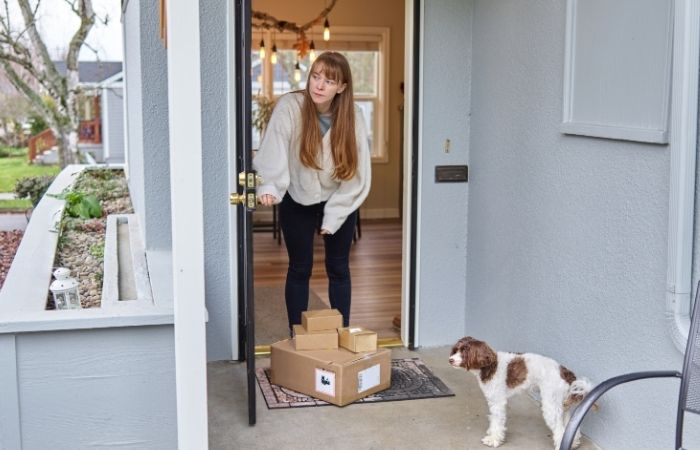The Growing Demand for Private STD Testing
Why Your Quiet Suburb Is the New STD Hotspot
Picture it: wide streets, well-trimmed hedges, hybrid SUVs, and PTA meetings where the biggest controversy is whether the fall bake sale should include gluten-free options. But underneath all that polished calm, something is quietly festering. In cul-de-sacs across America, sexually transmitted infections are exploding, and no one’s talking about it.
How did these neighborhoods, once thought to be havens of family values and “clean living,” become the latest epicenters of chlamydia, gonorrhea, and even syphilis? The truth is equal parts scandalous, scary, and sobering, but knowledge, as always, is power.

The Suburban STD Epidemic: What’s Really Going On?
Let’s start with the numbers. According to the CDC’s latest STI surveillance report, rates of chlamydia and gonorrhea have surged over the past five years in suburban and exurban areas, not just in major cities. In fact, several suburban counties surrounding cities like Minneapolis, Atlanta, and Dallas have higher per-capita rates of STDs than the cities themselves.
Why? Partly because the suburbs are changing. They’re more diverse, more connected, and more sexually active than ever before. And thanks to the rise of dating apps and declining STI education in schools, a perfect storm is brewing.
There’s also the illusion of safety. Many suburban adults think, “I’m not at risk. I’m married. I live in a ‘nice’ area.” But STDs don’t check your property taxes before infecting you. In fact, they thrive on complacency, and misinformation.
The Upside of Awareness: Why Talking About Suburban STDs Can Save Lives
Here’s the silver lining: talking about it helps. And awareness leads to action.
Getting tested regularly, even in a monogamous relationship, shows responsibility, not mistrust. Parents who teach their teens about safe sex early, including how to use condoms correctly and what STI symptoms look like, are arming their kids with literal life-saving knowledge.
And let’s be real: suburban folks are educated, resourceful, and well-connected. Once the taboo is broken, this community has the power to completely flip the narrative. Testing becomes normalized. Safe sex becomes non-negotiable. And shame gets replaced with support.
Plus, at-home STI testing kits are making it easier than ever to test discreetly, no judgment, no waiting rooms, no awkward eye contact.
Order Now $149.00 $392.00 Check Your STD Status in Minutes
Test at Home with Remedium
8-in-1 STD Test Kit




For all 8 tests
Suburban Silence: Why STD Risks Are Higher Than You Think
The silence is deadly. Unlike in urban areas where public health campaigns are more visible, suburban health departments often lack STI-specific outreach. Many school boards avoid comprehensive sex ed due to “concerns about morality.” And adult conversations about testing or protection? Practically nonexistent.
Combine that with the rise of discreet infidelity, suburban swinger culture, and hookup apps, and suddenly it’s not so hard to imagine how STDs are spreading quietly between well-manicured lawns.
There’s also a medical access issue. Many urgent care centers in the suburbs don’t specialize in STI testing, and some patients face judgment when they ask for it, especially older adults or married individuals. The result? They just don’t test. And what goes undiagnosed... spreads.
What You Can Do to Protect Yourself and Your Community
- Get tested regularly, even if you think you’re not at risk. Especially after a new partner, even in a “closed” marriage.
- Use protection consistently. Condoms and dental dams aren’t old-school, they’re effective.
- Talk to your kids early. Sex ed doesn’t have to be awkward. Silence is what makes things dangerous.
- Be honest with your partners. If you're hooking up, transparency about status and testing is a form of respect.
- Normalize testing in your social circles. Invite friends to test with you. Make it brunch-adjacent.
- Try an at-home STD test kit from a trusted site like STD Rapid Test Kits, it's private, fast, and accurate.

What the Experts Say
Dr. Alicia Hayes, a sexual health researcher in Minnesota, puts it bluntly:
“STDs in the suburbs are rising because people assume they’re safe. They aren’t getting tested, and they’re afraid to admit risk.”
Meanwhile, an anonymous case worker from a suburban Atlanta clinic told us:
“We see a lot of married couples, older adults, coming in after symptoms show up. Often, it’s their first test in decades.”
And a school nurse in Texas confessed:
“I had a student with untreated chlamydia for six months because her parents didn’t want her tested. That’s what we’re dealing with.”
How We Got Here: A Brief History of Suburban STI Culture
Suburbia was sold to post-WWII America as a haven from urban problems, including “dirty” sex and disease. That image stuck. But by the 2000s, that ideal began to crack.
The internet gave people more sexual freedom, and hookup culture spread far beyond the city. Meanwhile, sex education became more politicized, especially in conservative-leaning suburbs, where abstinence-only education often replaced science-based curriculums.
Now we’re seeing the result: generations of adults who were never taught to recognize STI symptoms, never told about regular testing, and never unlearned the shame around talking about sex. And the suburbs are paying the price.
Order Now $189.00 $490.00 Check Your STD Status in Minutes
Test at Home with Remedium
10-in-1 STD Test Kit




For all 10 tests
The Future of Suburban Sexual Health
But all hope is not lost, in fact, the future looks… promising. Telehealth and at-home testing are closing gaps in care. Millennials and Gen Z, now raising families in the suburbs, are demanding better sex ed and open dialogue. Health departments are starting to see the problem, and funding is slowly catching up.
We’re also seeing a surge in community-based testing events, often hosted in schools, rec centers, and even churches. The more accessible testing becomes, the more normalized it gets.
What’s next? Potentially, the suburbs could become leaders in sexual health innovation. But only if the silence breaks, and fast.
How to Apply This Knowledge in Real Life
Here’s how you bring this home (literally):
- Couples: Set a mutual testing date night every 6–12 months, especially if monogamy isn’t ironclad.
- Parents: Ask your child’s school what sex ed curriculum they use. If it’s trash, speak up.
- Singles: Add your testing status to your dating profile. Encourage partners to test before sex.
- Educators: Host anonymous Q&A boxes or peer-led discussions on campus.
You don’t need to become a sexual health warrior overnight. But you do need to stop pretending “that doesn’t happen here.” Because it does.

Which Industries Are Affected by the Suburban STD Surge?
STDs don’t just affect individuals, they ripple out into entire sectors:
- Healthcare: Urgent cares and OB-GYNs are seeing rising demand for STI treatment.
- Education: Schools struggle with outbreaks but lack funding for prevention.
- Insurance: Untreated STIs can lead to infertility and long-term health costs.
- Real Estate: Believe it or not, some home buyers are now Googling public health stats by ZIP code.
- Public Health: Local health departments are underfunded and overwhelmed, especially outside cities.
This isn’t just a medical issue. It’s an economic and systemic one.
True Stories from the Front Lines
Claire, 42, suburban mom of 3
“I got an STI from my husband. He didn’t cheat, he just hadn’t been tested since college. We assumed we were fine.”
Devon, 19, high school senior
“Our school teaches abstinence-only. I thought you could tell if someone had an STD. I was wrong.”
Marcus, 54, real estate agent
“I’m part of a swinger group in the suburbs. No one talks about testing. It’s awkward, but it shouldn’t be.”
These stories aren’t rare. They’re just rarely shared.
Order Now $45.99 $49.00 Check Your STD Status in Minutes
Test at Home with Remedium
Genital Herpes Test Kit




Common Misconceptions About STDs in the Suburbs
“STDs only happen in cities.”
Nope. Rural and suburban rates are now growing faster than urban ones in many states.
“You’ll know if you have one.”
Most STDs have no symptoms at all, until it’s too late.
“Testing is expensive.”
Many clinics offer free or low-cost tests. At-home kits are affordable too.
“If you’re married, you’re safe.”
Monogamy is not a guarantee. People cheat. People lie. Even unintentionally.
“Teenagers are the biggest risk.”
Adults aged 30–55 are actually driving much of the suburban surge.
FAQs
1. Can I get an STD even if I’m married and monogamous?
Yes. Past infections, secret infidelity, or previous untreated STDs can resurface.
2. How do I get tested without anyone knowing?
Use an at-home test kit. Fast. Private. Accurate.
3. What’s the most common STD in suburbs right now?
Chlamydia, followed closely by gonorrhea, especially among adults 30–50.
4. Can oral sex really spread STDs?
Absolutely. Gonorrhea, syphilis, and herpes can all spread this way.
5. What are early STD symptoms I should watch for?
Burning during urination, discharge, itching, sores, or nothing at all. Many are silent.
6. Is there such thing as STD immunity?
Nope. You can get the same STD more than once.
7. How accurate are home STD tests?
Most are 95–99% accurate when used correctly. Check for FDA approval.
8. Can untreated STDs cause long-term damage?
Yes, including infertility, pelvic pain, and even neurological issues.
9. What if my partner refuses to get tested?
That’s a red flag. Boundaries and health are non-negotiable.
10. How often should I get tested if I’m sexually active?
Every 3–6 months for non-monogamous individuals. Annually for most others.
The Wake-Up Call Your Neighborhood Needs
Let’s cut the polite suburban talk: STDs are rising. Silence is killing people. And it’s happening right next door.
Don’t wait for symptoms. Don’t wait for a scandal. Get tested. Talk to your partner. Share this article with your group chat, your HOA, your family WhatsApp. And if you're not sure where to start? Do it from your couch with a discreet, doctor-approved at-home test kit. It could be the smartest thing you ever do for your health.
The suburbs aren’t immune. But with honesty and action, they can be part of the solution.
Sources
1. CDC – National Overview of STIs in 2023
2. CDC – STI Surveillance Report 2022 (PDF)
3. WHO – Global STI Increase Report
4. CDC – Sexually Transmitted Infections (General Info)










